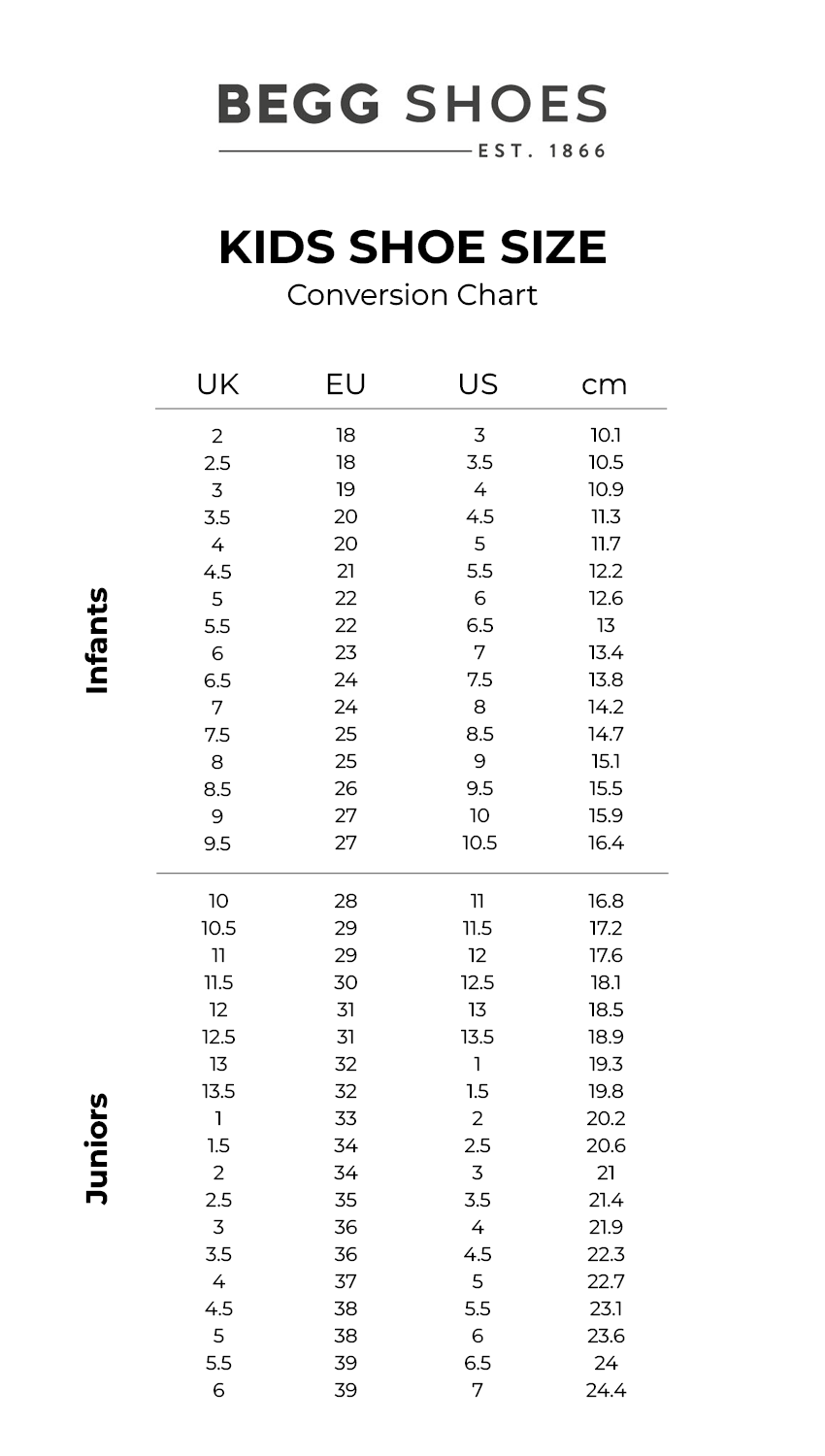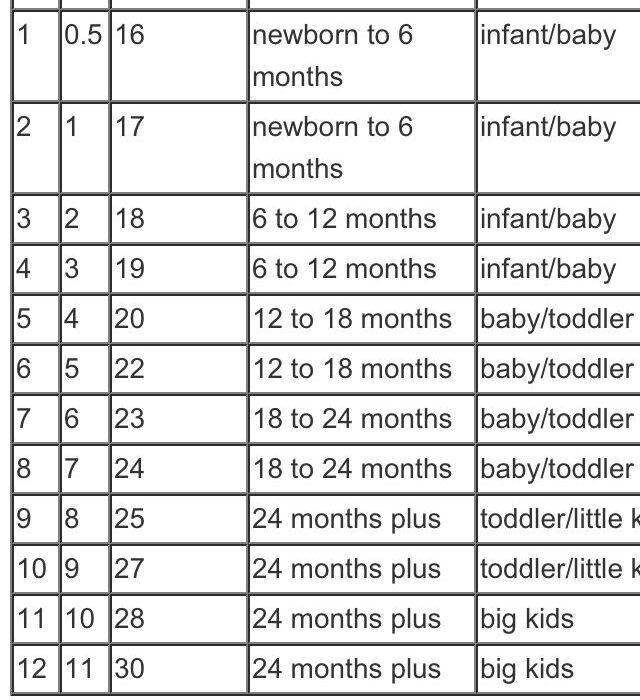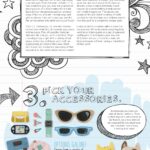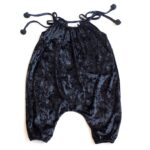A size 21 shoe typically corresponds to a US toddler size 5.5 or a UK size 4.5. It’s crucial to check specific brand size charts for accurate fitting.
Choosing the right shoe size for your baby or toddler is essential for their comfort and development. Shoes that fit well support little feet as they grow and explore. Size 21 is commonly used for toddlers, but variations exist among brands.
Understanding how sizes convert can help you make better choices. This guide provides insights into toddler shoe sizing, ensuring you find the perfect fit. You’ll learn about the importance of measuring your child’s feet and tips for selecting the best footwear. Let’s dive deeper into toddler shoe sizes and what they mean for your little one’s growth.
Table of Contents
Decoding Shoe Sizes: Why Numbers Matter
Shoe sizes are more than just numbers. They represent comfort, growth, and safety. Understanding these numbers helps parents choose the best footwear for their little ones.
Age Vs. Size: Understanding The Gap
Children grow quickly. Their feet change size often. Here’s a simple guide:
| Age Group | Average Shoe Size |
|---|---|
| 0-6 months | Size 0-2 |
| 6-12 months | Size 2-4 |
| 1-2 years | Size 4-6 |
| 2-3 years | Size 6-8 |
| 3-4 years | Size 8-10 |
These sizes are averages. Each child is unique. Measure feet regularly to keep up with growth.
The Importance Of The Right Fit
A proper fit is crucial for development. Here’s why:
- Comfort: Shoes should feel good on tiny feet.
- Support: Good shoes help with balance and walking.
- Health: Poor fit can cause foot problems.
To find the right fit:
- Measure both feet.
- Try shoes on at the end of the day.
- Check for a thumb’s width of space at the toe.
Choosing the correct size matters. Happy, healthy feet lead to happy kids.
The World Of Baby And Toddler Shoes
Choosing the right shoes for babies and toddlers is essential. Their feet grow quickly and need proper support. This guide helps parents understand shoe sizes, materials, and styles. Knowing what to look for makes shopping easier and more fun.
From Crawling To Walking: Shoe Needs
Babies and toddlers have different shoe needs. Their footwear supports their growth and development. Here’s a quick look at what shoes to choose at each stage:
| Age Range | Activity | Shoe Type |
|---|---|---|
| 0-6 months | Crawling | Soft booties |
| 6-12 months | First steps | Flexible shoes |
| 1-2 years | Walking | Sturdy shoes |
| 2-4 years | Running and playing | Supportive sneakers |
Soft booties keep tiny feet warm. Flexible shoes help with balance. Sturdy shoes protect little feet from bumps. Supportive sneakers assist active toddlers.
Materials And Types: Comfort Comes First
Baby and toddler shoes come in various materials. Choosing the right material ensures comfort.
- Leather: Durable and breathable.
- Canvas: Lightweight and easy to clean.
- Mesh: Breathable and flexible.
- Rubber: Ideal for soles, providing grip.
Here are some types of shoes to consider:
- Booties: Best for infants.
- Soft-soled shoes: Perfect for new walkers.
- Sandals: Great for warmer weather.
- Sneakers: Best for active toddlers.
Prioritize comfort and fit. Always check for enough room for growth. A well-fitted shoe allows for healthy foot development.
Size 21 Explained: Navigating The Sizing Chart
Understanding baby and toddler shoe sizes can be tricky. Size 21 is common for little ones. This section will help you navigate the sizing chart effectively.
Comparing International Sizing
Shoe sizes vary across the world. Size 21 may differ in different regions. Here’s a quick comparison of sizes:
| Region | Size 21 Equivalent |
|---|---|
| UK | 5 |
| US | 5.5 |
| EU | 21 |
| Japan | 13 |
Make sure to check the size chart for each brand. Sizes can vary even within the same country.
Measuring For The Perfect Fit
Measuring your child’s foot is crucial. It ensures a proper fit. Follow these simple steps:
- Gather a ruler or measuring tape.
- Have your child stand on a piece of paper.
- Trace around the foot carefully.
- Measure the longest part of the foot.
- Consult the sizing chart for the correct size.
Consider these tips for a better fit:
- Measure feet at the end of the day.
- Leave a little space for growth.
- Try shoes on both feet.
Finding the right shoe size for your child helps comfort and support. Size 21 is a great starting point for many toddlers.

Credit: www.beggshoes.com
When To Buy Size 21: Age And Growth Patterns
Choosing the right time to buy size 21 shoes is crucial. Babies and toddlers grow rapidly. Understanding their growth patterns helps in selecting the right size.
Predicting Growth Spurts
Growth spurts occur at different ages. Here are some common ages for size 21:
| Age (Years) | Typical Shoe Size |
|---|---|
| 1 | Size 21 |
| 1.5 | Size 22 |
| 2 | Size 23 |
Babies often grow about half a size every few months. Monitor their feet regularly. Check for signs of growth to ensure proper fit.
Signs It’s Time For A Bigger Size
- Worn-out toe area.
- Visible pressure marks on the foot.
- Difficulty putting on or taking off shoes.
- Complaints of discomfort or pain.
Watch for these signs. Act quickly to avoid foot issues. Regularly check your child’s shoes for fit and comfort.
Shopping Tips For Baby And Toddler Shoes
Finding the right shoes for babies and toddlers can be tricky. The right fit supports healthy growth and development. Here are some useful tips to help you shop smart.
Where To Shop: Retail Vs. Online
Choosing where to buy shoes is important. Each option has its benefits.
| Shopping Option | Pros | Cons |
|---|---|---|
| Retail Stores |
|
|
| Online Shopping |
|
|
Seasonal Considerations: Planning Ahead
Seasonal changes affect shoe needs. Plan for different weather conditions.
- Winter: Look for warm, waterproof shoes.
- Summer: Choose breathable sandals.
- Spring/Fall: Opt for versatile shoes that can handle rain.
Measure your child’s feet regularly. Feet grow quickly. Buy shoes that allow a little room for growth. Remember to check the fit before every season.
Ensuring Comfort And Safety
Choosing the right shoe size for your little one is crucial. A size 21 shoe should fit well to promote comfort and safety. Ill-fitting shoes can cause pain and lead to future foot problems.
Selecting The Right Material
The material of the shoe affects comfort. Here are some materials commonly used:
| Material | Benefits |
|---|---|
| Leather | Durable and breathable |
| Canvas | Lightweight and easy to clean |
| Synthetic | Water-resistant and flexible |
Opt for soft, breathable materials. Avoid stiff materials that restrict movement. Soft shoes help little feet grow naturally.
Checking For Support And Flexibility
Support and flexibility are vital for toddlers. Proper support helps with balance. Flexibility allows for natural foot movement.
- Check the arch support.
- Ensure the sole bends easily.
- Look for cushioned insoles.
Test the shoe’s flexibility. Press the toe area. It should bend easily. Ensure the heel is firm but not rigid.
Always check for proper fit. There should be a thumb’s width between the toe and shoe front. This space allows for growth.
The Cost Factor: Budgeting For Baby Shoes
Buying baby shoes can be tricky. You want quality without breaking the bank. Knowing how to budget helps you find the right fit for your little one. This section covers how to find affordable yet durable options.
Finding Quality Within Budget
Quality is key when choosing baby shoes. Look for materials that offer comfort and support. Here are some tips to find quality shoes:
- Check for breathable fabrics.
- Look for flexible soles.
- Ensure proper cushioning.
- Read customer reviews for insights.
Consider these brands known for quality baby shoes:
| Brand | Price Range | Quality Rating |
|---|---|---|
| Stride Rite | $30 – $60 | ★★★★☆ |
| New Balance | $40 – $70 | ★★★★★ |
| Puma | $25 – $55 | ★★★★☆ |
When To Splurge And When To Save
Knowing when to spend more helps with budgeting. Here’s a simple guide:
- Splurge: On shoes for active toddlers. They need support.
- Save: On shoes for special occasions. They are often worn less.
- Splurge: On first walking shoes. Proper fit is crucial.
- Save: On trendy shoes. Kids outgrow them quickly.
Remember, smart budgeting means getting the best for your child without overspending.
Caring For Baby Shoes: Maintenance Tips
Caring for baby shoes helps keep them in great shape. Proper maintenance extends their life. Here are some simple tips for cleaning, storing, and repairing baby shoes.
Cleaning And Storage
Cleaning baby shoes is essential. Dirt and grime can damage materials. Follow these steps:
- Remove dirt: Use a soft brush or cloth.
- Use mild soap: Mix soap with warm water.
- Wipe shoes: Clean the surface gently.
- Dry properly: Let them air dry. Avoid direct sunlight.
Storage is just as important. Store shoes in a cool, dry place. Use a shoe box or container. This keeps them safe from dust and damage.
Dealing With Wear And Tear
Baby shoes often face wear and tear. Here are tips to handle common issues:
- Loose soles: Use shoe glue to reattach them.
- Scuffed surfaces: Use a magic eraser for small marks.
- Frayed laces: Replace them easily with new ones.
- Broken straps: Sew or use fabric glue to fix.
Regular checks help catch issues early. Inspect shoes every month. This ensures they stay safe and comfortable for your child.
Common Mistakes To Avoid
Choosing the right shoe size for your child is crucial. Many parents make common mistakes. Avoiding these errors ensures comfort and proper foot development.
Ignoring The Signs Of Discomfort
Children may not always communicate discomfort. Watch for these signs:
- Frequent complaints about sore feet.
- Visible redness or blisters on their feet.
- Refusing to wear certain shoes.
- Walking on tiptoes or limping.
Ignoring these signs can lead to long-term issues. Regularly check your child’s shoes for fit and comfort.
Choosing Style Over Function
Many parents prioritize style over comfort. This can harm your child’s feet. Consider these tips:
- Look for shoes with proper arch support.
- Choose breathable materials for better airflow.
- Ensure the shoe has a flexible sole for easy movement.
- Check for a secure fit around the heel.
Stylish shoes can be functional too. Focus on both style and function for the best choice.

Credit: www.pediped.com
The Role Of Shoes In Development
Choosing the right shoes for babies and toddlers is crucial. Shoes support their growth and development. They protect tiny feet while allowing natural movement. Understanding the role of shoes helps parents make better choices.
Supporting Natural Foot Development
Proper shoes can enhance foot growth and comfort. Look for shoes that:
- Have a flexible sole
- Allow space for toes to wiggle
- Provide lightweight materials
- Support the arch of the foot
These features help babies and toddlers develop strong, healthy feet. Avoid shoes that are too tight. Tight shoes can cause discomfort and foot problems.
| Feature | Importance |
|---|---|
| Flexible Sole | Encourages natural movement |
| Toe Space | Allows for growth and comfort |
| Lightweight Material | Reduces fatigue and enhances mobility |
| Arch Support | Promotes proper foot alignment |
The Debate Around Barefoot Vs. Shoes
Many parents wonder if barefoot walking is better. There are benefits to both options. Here’s a quick comparison:
- Barefoot Walking
- Promotes natural foot strength
- Improves balance and coordination
- Wearing Shoes
- Provides protection from rough surfaces
- Offers support for active play
Experts suggest a balanced approach. Let children walk barefoot indoors. Use shoes outdoors for safety. This way, kids can enjoy the best of both worlds.
Expert Opinions: What Pediatricians Say
Pediatricians emphasize the importance of proper shoe fitting for children. Their insights help parents choose the right size. Shoes can affect a child’s foot development and overall health.
Choosing The Right Shoe
Experts recommend several key factors for selecting shoes for toddlers. Here are some essential tips:
- Fit: Shoes should fit snugly but not too tight.
- Flexibility: The shoe should bend easily at the ball.
- Support: Good arch support is vital for growing feet.
- Material: Choose breathable materials for comfort.
According to pediatricians, it’s best to measure your child’s feet regularly. Children’s feet grow quickly. Consider these points for measuring:
- Measure both feet while standing.
- Allow some space (about a thumb’s width) at the toe.
- Check for width; the shoe should not pinch.
Monitoring Foot Health
Pediatricians advise regular foot checks for toddlers. Foot problems can arise without notice. Here are signs to watch for:
- Pain: If your child complains of foot pain.
- Swelling: Look for any unusual swelling.
- Flat Feet: Check for signs of flat feet.
It’s crucial to schedule check-ups with a pediatrician. They can assess foot health and recommend suitable shoes. Consistent monitoring ensures your child’s feet develop correctly.
| Age Group | Typical Shoe Size |
|---|---|
| Infants (0-12 months) | Size 0-3 |
| Toddlers (1-2 years) | Size 4-7 |
| Preschool (3-5 years) | Size 8-11 |
Real Parent Experiences
Parents often share their journeys in finding the right shoe size for their little ones. Their stories offer practical insights and relatable moments. Here are some real-life experiences from parents navigating baby and toddler shoe sizes.
Success Stories
Many parents celebrate victories in finding the perfect fit. Here are a few inspiring success stories:
- Maria: Found a great brand that fits her toddler’s wide feet.
- John: Discovered a local store with a fitting service. His son loved the shoes.
- Lisa: Successfully transitioned her baby from booties to walking shoes.
These experiences prove that patience pays off. Some parents recommend trying multiple brands.
Lessons Learned
Every parent faces challenges with shoe sizes. Here are some valuable lessons learned:
- Measure your child’s feet regularly. They grow quickly!
- Buy shoes with room to grow. A thumb’s width is a good rule.
- Choose flexible materials. This helps with comfort and movement.
Many parents suggest trying shoes on in-store. Online purchases can lead to sizing issues.
Real experiences highlight the journey of finding the right shoes. They remind us that every child is unique.
Looking Ahead: Transitioning To Bigger Sizes
As your child grows, so do their shoe sizes. Understanding when to transition to bigger sizes is crucial. This guide will help you recognize important milestones and keep up with your child’s rapid growth.
Recognizing The Milestones
Children experience growth spurts. These spurts affect their shoe sizes. Here are some key milestones to watch for:
- First steps: Usually around 12 months.
- Walking confidently: Often by 15-18 months.
- Running and jumping: Typically by age 2.
- Changing shoe sizes: Every 3-6 months during early childhood.
Check their shoe fit regularly. Shoes should have a thumb’s width of space at the toe. If your child complains about tightness, it’s time to size up.
Keeping Up With Fast Growth
Children’s feet grow quickly. It’s essential to monitor growth closely. Here are some tips for managing this transition:
- Measure your child’s feet every few months.
- Keep a record of sizes. Use a chart for easy tracking.
- Look for signs of discomfort. Pay attention to any blisters or redness.
- Invest in quality shoes. They provide better support and comfort.
| Age | Average Shoe Size | Growth Rate |
|---|---|---|
| 0-12 months | Size 1-3 | 1-2 sizes per year |
| 1-2 years | Size 4-6 | 2 sizes per year |
| 2-3 years | Size 7-9 | 2 sizes per year |
| 3-4 years | Size 10-11 | 1-2 sizes per year |
Transitioning to bigger sizes can be simple. Stay attentive and proactive. Your child’s comfort is the priority.

Credit: www.etsy.com
Frequently Asked Questions
What Age Wears A Size 21 Shoe?
Typically, children aged 12 to 18 months wear a size 21 shoe, depending on their growth and development.
How Do I Measure My Child’s Foot Size?
Use a ruler or measuring tape to measure from heel to toe while the child is standing.
What Is The Average Shoe Size For Toddlers?
The average shoe size for toddlers ranges from size 20 to 23, varying by age and individual growth.
Are Shoe Sizes The Same Worldwide?
No, shoe sizes differ across countries. Always check specific size charts for accurate conversions.
How Often Should I Check My Child’s Shoe Size?
Check every 2-3 months as children’s feet grow rapidly, ensuring a comfortable fit and proper support. “`
Conclusion
Understanding shoe sizes for babies and toddlers is essential for their comfort and development. Size 21 is a common choice for little ones. Remember to measure their feet regularly to ensure the perfect fit. Choosing the right size promotes healthy growth and happy little feet.
Happy shoe shopping!







